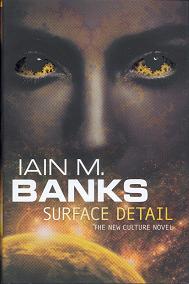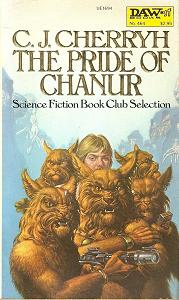A couple of months ago science fiction blog Torque Control had a lively discussion on “women, sf, and the current British market” and why it was female sf writers still seemed to have a much lower profile than their male counterparts. It inspired me to look at my own reading patterns and to my shock I discovered only ten percent or so of the sf books I’d read the last ten year were by women. Which of course means that I can’t put together a top ten list of the best sf books by female writers of the past decade, as Niall called for from the Torque Control readers. If you’ve only read a handful of books that fit the criteria, it’s pointless to put together a list. But I still want to put some candidates I would include in such a list.
First up is Jo Walton’s Farthing and sequels. Who would think that it was still possible in 2006 to write a “Hitler Wins” alternate history novel and offer a new perspective, but Jo Walton did. She does it by pairing the alternate history with a country house murder mystery, the coziness of that particular subgenre masking the existential horror of the world in which it takes place. As with most alternate histories of this type, some or much of its impact lies in the mismatch of what we know happened in historic reality and what the characters know/believe or allow themselves to know. But by making one of her protagonists a homosexual Scotland Yard inspector, she also makes explicit the continuity between an England that had, if not physically, certainly spiritually surrendered to the nazis and the England of our own reality. England was an anti-semitic, racist, “no dogs/no blacks/no Irish” country in which homosexuals could be hounded to their deaths, before and after World War II. That’s what makes Farthing so chilling, a genuine classic alternate history novel on a par with e.g. The Man in the High Castle.
Second, Mary Gentle’s 1610: a Sundial in a Grave, which does not look like science fiction, but in my personal classificiation it is. I first discovered Mary Gentle back in the eighties with Golden Witchbreed and have always found her a difficult writer, somebody who made you work at her stories, who sometimes seemed to go out of her way to make it more obscure than necessary. It can’t have helped her popularity, but I’ve always found it rewarding to struggle through her books — and she is one of the writers I do struggle with. 1610 is no different, though perhaps because it’s inspired by Alexandre Dumas pseudohistorical novels (Three Musketeers et all), it was surprisingly easy to read. It ticked all the Gentle boxes though: semi-historical, as in Ash told through supposedly translated historical documents and set in the early seventeenth century, a period Gentle returns to again and again. There’s the hermetic magic/science, though less prominent than in some of her other works, as well as the physical realities of adventuring: blood and filth and pain and sex all shown raw, with nothing pretty about it.

